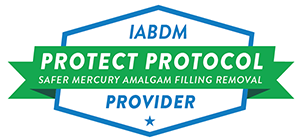
When we hear the word "fluoride," it sounds familiar, like one of the many chemicals we learn about in science class. But what exactly is fluoride? Fluoride is actually found in everyday items such as drinking water, mouthwash, and toothpaste. It is often referred to as the “dental health companion” due to its purported role in maintaining strong and healthy teeth. But is that all there is to this controversial chemical? Let's discuss the other side of fluoride, a controversy in dentistry.
Harmful Effects of Fluoride on Our Health
Fluoride, despite its widely acknowledged benefits for dental health, has also raised concerns regarding its harmful effects on human health. A 2006 report by the National Research Council (NRC) identified a number of health risks associated with fluoride exposure. One example is dental fluorosis, which is a condition caused by excessive fluoride intake during childhood, affecting tooth enamel. It can lead to white streaks, brown spots, or enamel pitting on teeth. When we see dental fluorosis in the teeth, it is highly likely in the bones.
Another significant area of concern is the impact of fluoride on neurological development, particularly in children. Studies have suggested a link between high fluoride exposure and cognitive impairment, including reduced IQ levels. Prenatal exposure to fluoride has also been associated with adverse effects on brain development, raising alarms among health experts and parents. Aside from dental health, fluoride has been implicated in various systemic health issues. Some research suggests that chronic fluoride exposure may contribute to skeletal fluorosis, a condition characterized by bone and joint pain, stiffness, and deformities. People with pre-existing renal or thyroid conditions may be particularly vulnerable to the adverse effects of fluoride. Furthermore, there are environmental concerns associated with fluoride. The widespread use of fluoride in water fluoridation, agriculture, and industrial processes can lead to environmental contamination and harm aquatic ecosystems.
Read more here: Fluoride Facts: Sources, Exposure and Health Effects - IAOMT
Since the 1940s, a plethora of fluoride-containing products have been introduced to the average consumer, contributing to health risks associated with fluoride exposure. These sources encompass a wide range of everyday items, including artificially fluoridated municipal water, beverages made with fluoridated water, dental cements and fillings, dental gels and varnishes, floss, fluoride drugs and supplements, fluoride-containing food, mouthwash, pesticides, pharmaceutical drugs with perfluorinated compounds, and toothpaste. The health risks stemming from exposure to these fluoride sources are often underestimated, with factors such as age, gender, genetics, nutritional status, and weight influencing individual reactions to fluoride.
Some specific health risks associated with fluoride exposure include dermatological conditions like acne, arterial calcification, bone weakness and fracture risk, osteosarcoma (bone cancer), cardiac failure and insufficiency, cognitive deficits, dental fluorosis, diabetes, early puberty in girls, electrocardiogram abnormalities, harm to the fetal brain, hypertension, immune system complications, insomnia, iodine deficiency, lower fertility rates, lower IQ, myocardial damage, neurotoxic effects including ADHD, osteoarthritis, skeletal fluorosis, temporomandibular joint disorder (TMJ), and thyroid dysfunction.
Read more here: Fluoride Exposure and Human Health Risks - IAOMT
How to Reduce Fluoride Consumption
Reducing fluoride consumption requires a multifaceted approach aimed at minimizing exposure from various sources. One effective strategy is to invest in water filtration systems that specifically target fluoride removal, ensuring that the water consumed at home is fluoride-free. Alternatively, opting for bottled water labeled as "fluoride-free" or distilled water can provide a convenient solution, especially in areas where tap water is fluoridated.
Moreover, selecting toothpaste and oral care products that do not contain fluoride is crucial in limiting exposure. Many brands now offer fluoride-free options, often formulated with alternative ingredients like hydroxyapatite, which promote dental health without the risks associated with fluoride. Consulting with a biological dentist can also provide valuable insights into choosing the most suitable fluoride-free dental products.
Aside from oral care products, attention should be paid to dietary sources of fluoride. Processed foods and beverages, including canned soups, sodas, and juices, often contain fluoridated water as an ingredient. By reducing the consumption of these items and opting for fresh, whole foods, individuals can minimize fluoride intake from food sources.
Choosing organic produce can also contribute to reducing fluoride intake, as organic farming practices typically involve the use of non-fluoridated water sources for irrigation. Additionally, organic grains and meats are less likely to contain fluoride residues compared to their conventional counterparts, further supporting efforts to minimize fluoride consumption.
Lastly, practicing good oral hygiene habits, such as incorporating fat soluble vitamins A, D, E and K into the diet as well as brushing and flossing regularly, remains paramount in maintaining dental health while minimizing fluoride exposure. By adopting these comprehensive strategies, you can effectively lessen your consumption of fluoride and mitigate health risks associated with excessive fluoride exposure.
Hydroxyapatite as an Alternative for Fluoride
Given the harm associated with fluoride, choosing hydroxyapatite toothpaste is a viable alternative. Constituting a significant portion of tooth enamel, it remineralizes teeth from within, effectively repairing enamel fissures caused by demineralization. Unlike fluoride, hydroxyapatite does not disrupt the oral microbiome, fortifying enamel while maintaining bacterial balance.
Studies comparing hydroxyapatite to fluoride toothpaste reveal comparable efficacy in remineralizing teeth. Hydroxyapatite also boasts additional benefits, including fortifying enamel, being non-toxic, and whitening teeth without abrasives. This makes it an appealing choice, particularly for pregnant women, those residing in fluoridated areas, young children, and individuals with sensitive teeth. The studies recommend toothpaste brands containing at least 10% hydroxyapatite concentration. It emphasizes the importance of discussing the switch to hydroxyapatite toothpaste with a dentist.
In light of the evidence pointing to fluoride being a dangerous chemical, it's crucial to explore fluoride-free alternatives for dental care. With fluoride-free options readily available for various dental products, individuals can prioritize their oral health without compromising their overall well-being.
At enlightenDENTAL, your dental care is not only about restoring smiles but also about fostering an environment where safety and well-being take center stage. As the dental field evolves, we remain steadfast in our mission to provide enlightened dental care, setting the standard for a future where optimal oral health is effortlessly intertwined with the highest levels of safety and innovation.
Make the choice for a safer, healthier tomorrow – choose enlightenDENTAL for your fluoride-free cleanings, general dental care and check how fluoride has affected your oral and systemic health thus far.



.png)


